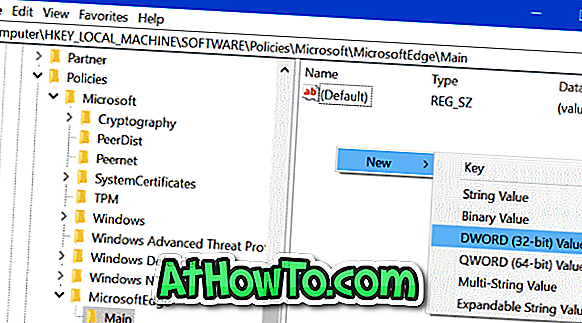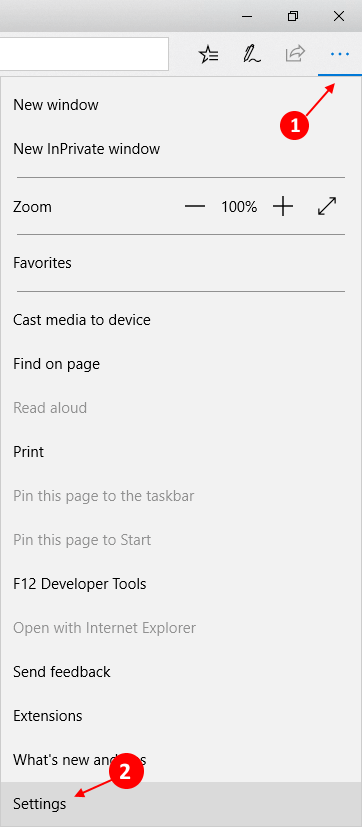
Can I start Microsoft Edge in Private mode from a shortcut? Private mode is a useful feature of Microsoft Edge that allows you to surf without leaving traces (like your history, temporary internet files, and cookies) of your activities on your PC. Here are 3 simple ways to open Edge in Private mode in Windows 10.
InPrivate browsing Microsoft Edge’s InPrivate Browsing allows you to surf the internet without your search history, temporary files, cookies, usernames, and passwords being retained by the browser. All this data is automatically deleted as soon as you close the InPrivate window.
Version 80 of Microsoft’s Edge browser, now based on the Chromium source code, launched on January 15th, and with it came an increased focus on privacy. Edge includes tools to block both first. Download this app from Microsoft Store for Windows 10 Mobile, Windows Phone 8.1, Windows Phone 8. See screenshots, read the latest customer reviews, and compare ratings for Private Browser. It runs only while InPrivate browsing and so doesn't disrupt everyday browsing, but when you really need to bookmark your surprise party plans, et cetera, you can do so easily from the address bar. The next time you're InPrivate browsing, it's then really easy to bring up pages you've bookmarked in the past.
Method 1: Open Edge in Private mode from Start Menu or Taskbar
If you’ve pinned the Edge browser to Start Menu or taskbar, just right-click on it and then click New InPrivate window option.
Microsoft Edge will then launch in Private mode.
Method 2: Access Private mode from within Edge Browser
Start your Edge browser, then click on the three dots labelled More actions. Select New InPrivate window to open a new window in Private mode.
Method 3: Create a Desktop Shortcut to Open Edge in Private mode
- Right-click any empty area on your desktop, and then select New -> Shortcut.
- When the wizard of creating shortcut appears, copy and paste the following in the location box. Click Next.
cmd.exe /c start shell:AppsFolderMicrosoft.MicrosoftEdge_8wekyb3d8bbwe!MicrosoftEdge -private - Give a name for the shortcut. E.g., Microsoft Edge InPrivate.
- Now you can see the newly-created shortcut on your desktop, but it uses the Command Prompt icon. To change the icon, right-click on the shortcut and select Properties.
- In the Properties window, go to the Shortcut tab. Click the Change Icon button.
- Copy and paste the following path into the “Look for icons in this file” box, and hit Enter. When you see the Edge icon, click OK.
%SystemRoot%SystemAppsMicrosoft.MicrosoftEdge_8wekyb3d8bbweMicrosoftEdge.exe - You’re all done. Simply double-click the Edge shortcut on the desktop and you can open Edge in Private mode automatically.

Related posts:
Note: This article is for the new Microsoft Edge . Get help for the legacy version of Microsoft Edge.
Find In Private Browsing History

The new Microsoft Edge will delete your browsing history, cookies, and site data, as well as passwords, addresses, and form data when you close all InPrivate windows.
You can open an InPrivate window in different ways:
Enabling wifi on desmume 0.9.7 for mac. Right-click the Microsoft Edge logo in the taskbar and select New InPrivate window.
In Microsoft Edge, right-click a link and select Open link in InPrivate window.
In Microsoft Edge, select Settings and more > New InPrivate window. Installing adobe acrobat pro on terminal server.
Other people using this device won’t see your browsing activity, but your school, workplace, and internet service provider might still be able to access this data.
What does Microsoft Edge do with your data while InPrivate?
InPrivate browsing does:
Clear browsing history, download history, cookies and other site data, cached images and files, passwords, autofill form data, site permissions and hosted app data when you close all InPrivate windows.
Save your favorites and downloaded files, so you can access them next time you use Microsoft Edge.
Allow you to access favorites, passwords, and form fill data from the profile used to open the InPrivate window.
Allow extensions you've given permission to run while browsing InPrivate. Maglite serial number.
Automatically use InPrivate search with Microsoft Bing for searches in the InPrivate landing page search bar and on Bing.com. If the default search engine is Bing, searching in the address bar will use InPrivate search as well.
Notes:
Microsoft Edge can’t prevent extensions from saving your browsing history while browsing InPrivate.
When using the Windows IME keyboard for typing and inking, data may be collected to improve language recognition and suggestion capabilities. To stop inking and typing data from being collected by Microsoft while using the Windows IME keyboard in InPrivate and normal browsing windows, go to Windows Settings > Privacy > Inking & typing personalization.
Webpages such as edge://settings, edge://favorites, and edge://history can’t be viewed in an InPrivate window. Opening these pages when browsing InPrivate will open them in a normal browsing window.

InPrivate browsing does not:
Associate your browsing history with a Microsoft account or use this data for product improvement.
Save new passwords, addresses, and info filled in online forms.
Allow you to re-open recently closed tabs and windows from Settings and more > History > Recently closed.
Am I safer while browsing InPrivate?
InPrivate browsing doesn’t keep you safer from malicious websites or provide additional ad blocking. Websites can still personalize content for you during your InPrivate browsing session because cookies and other site permissions aren’t deleted until you close all InPrivate windows.
To help prevent websites from personalizing content and ads for you, switch your level of tracking prevention to Strict in Microsoft Edge or go to Settings and more > Settings > Site permissions > Cookies and site data and turn on Block third-party cookies. This might cause some sites to behave unexpectedly.
When is InPrivate browsing unavailable?
Private Browsing Internet Explorer
Children with activity reporting or web filtering enabled through their family group can’t browse InPrivate. Organizations, like schools or workplaces, can use group policy to prevent people from browsing InPrivate.
